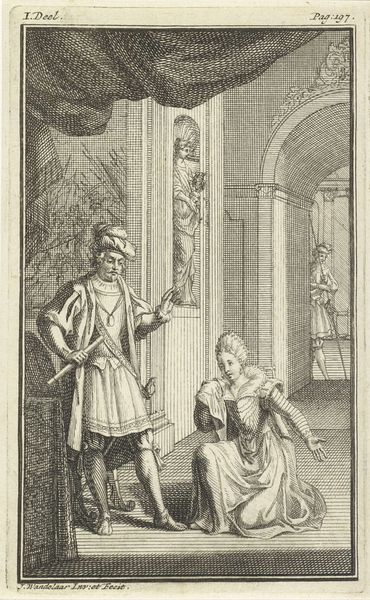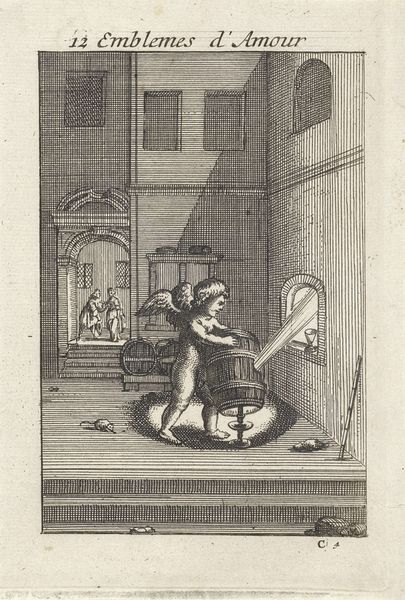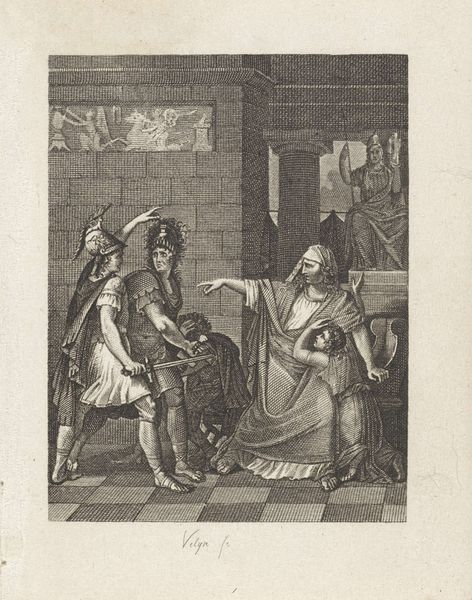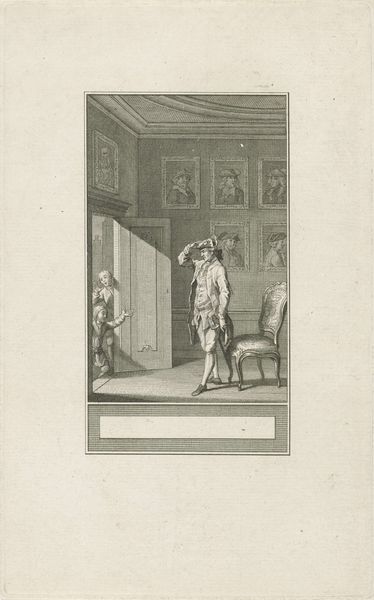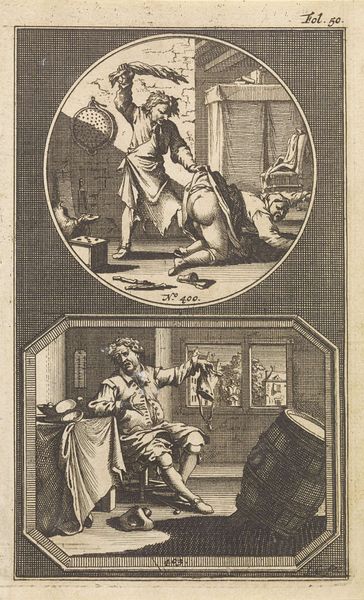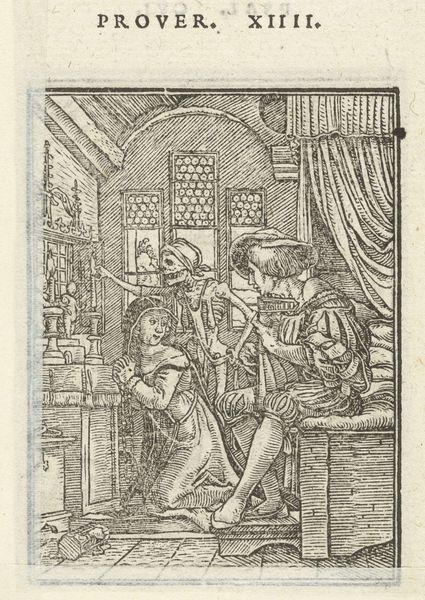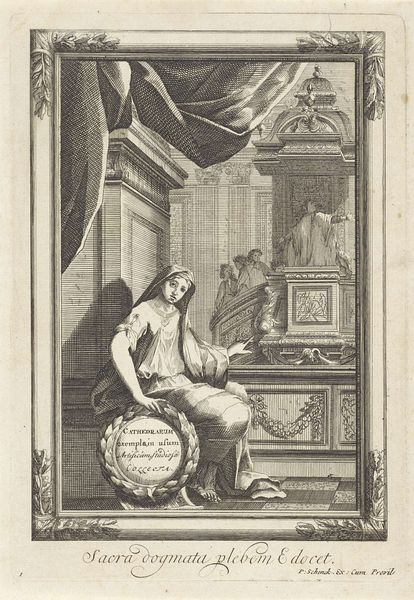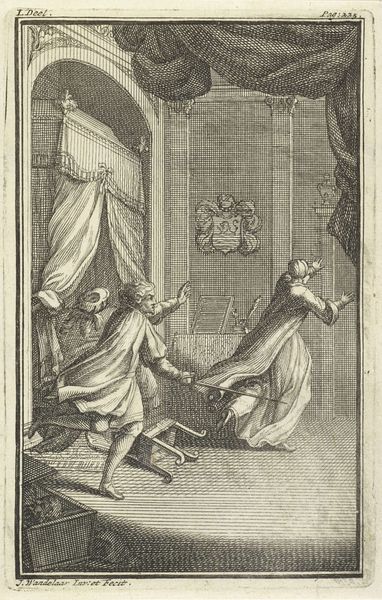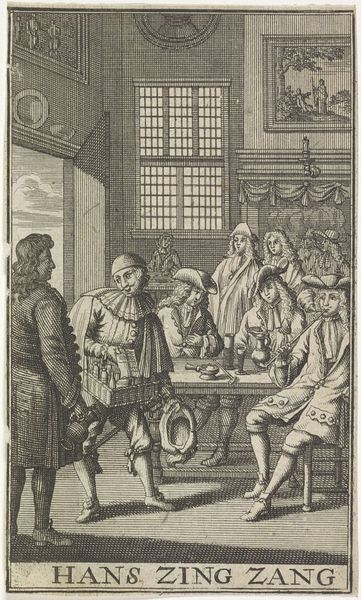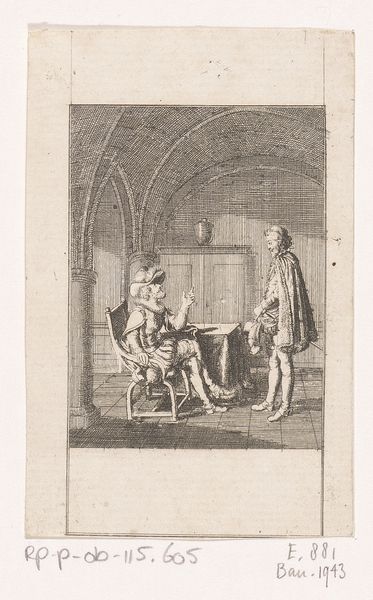
drawing, print, ink, engraving
#
drawing
#
narrative-art
# print
#
figuration
#
ink
#
genre-painting
#
engraving
Dimensions: height 138 mm, width 85 mm
Copyright: Rijks Museum: Open Domain
Editor: So, here we have Jan Wandelaar's "Man in a Prison," created around 1722-1723 using ink in engraving. The mood strikes me as incredibly somber. The tight space and visible confinement really speak to a loss of freedom. What do you see in this piece? Curator: What strikes me is the very act of representing incarceration within a public forum. This wasn't just a personal reflection, it was circulated. It raises questions about the social function of such images: who was the audience and what kind of message was Wandelaar trying to convey about justice, punishment, and perhaps even social order? Does it reflect an acceptance of the justice system, or a subtle critique? Editor: That's a fascinating point. I hadn't considered the societal implications of its display. I assumed it was simply a genre scene, depicting everyday life, albeit a grim one. Curator: Precisely, and that's where historical context is crucial. While appearing as a "genre painting," it participates in a larger visual discourse about crime and punishment that was unfolding during the Enlightenment. Consider how similar imagery may have served either as warnings or calls for prison reform, influencing public perception and shaping attitudes towards marginal populations. The prison itself becomes a symbolic stage. What narratives do you imagine the public constructed around such representations? Editor: I suppose viewers at the time could interpret it as a warning, or maybe even evoke sympathy. Curator: Or perhaps it simply normalized the spectacle of confinement? The institutionalization of the prison was still relatively novel. Images like these played a crucial role in its social acceptance and normalizing it. So, what's more interesting – the individual depicted, or the institution and its role? Editor: Definitely gives me a lot to think about, more than I initially imagined. Thanks! Curator: Indeed, these images speak volumes when you examine the culture surrounding their creation and circulation.
Comments
No comments
Be the first to comment and join the conversation on the ultimate creative platform.
